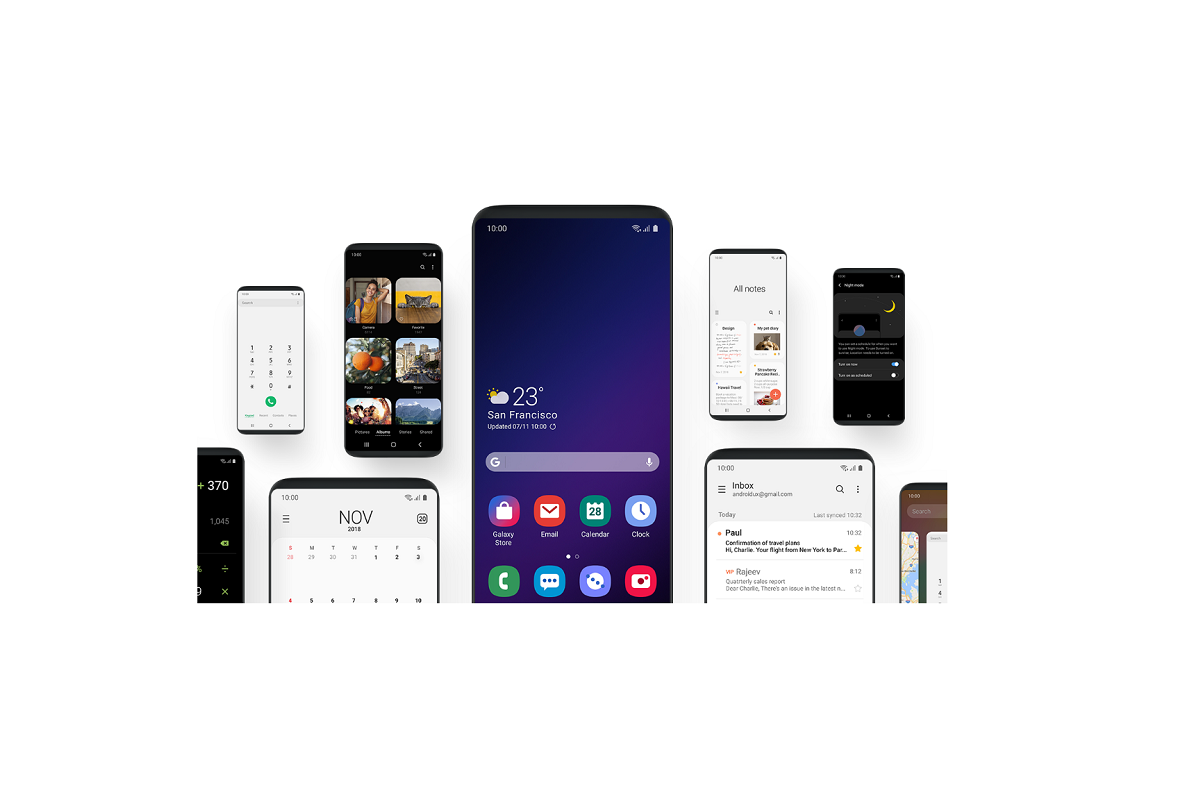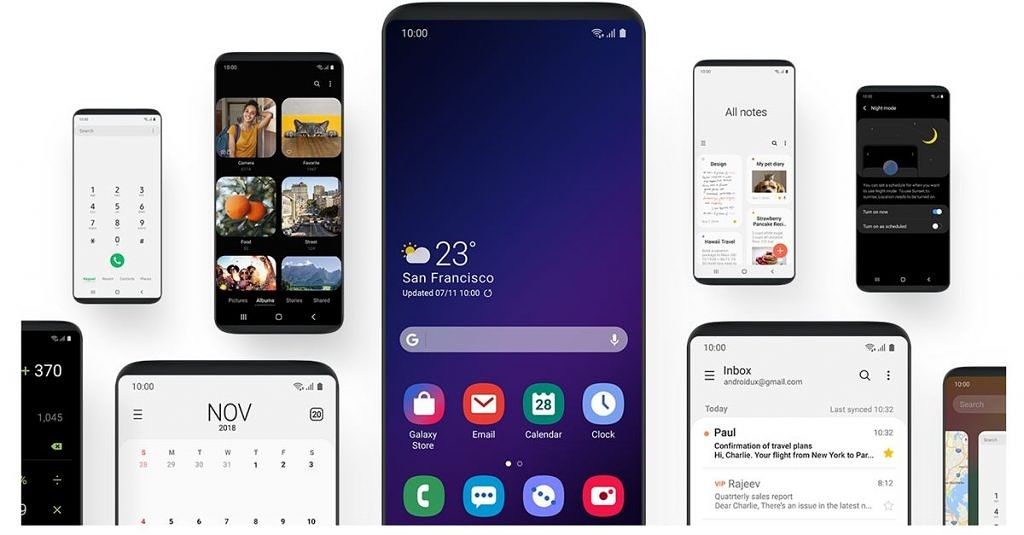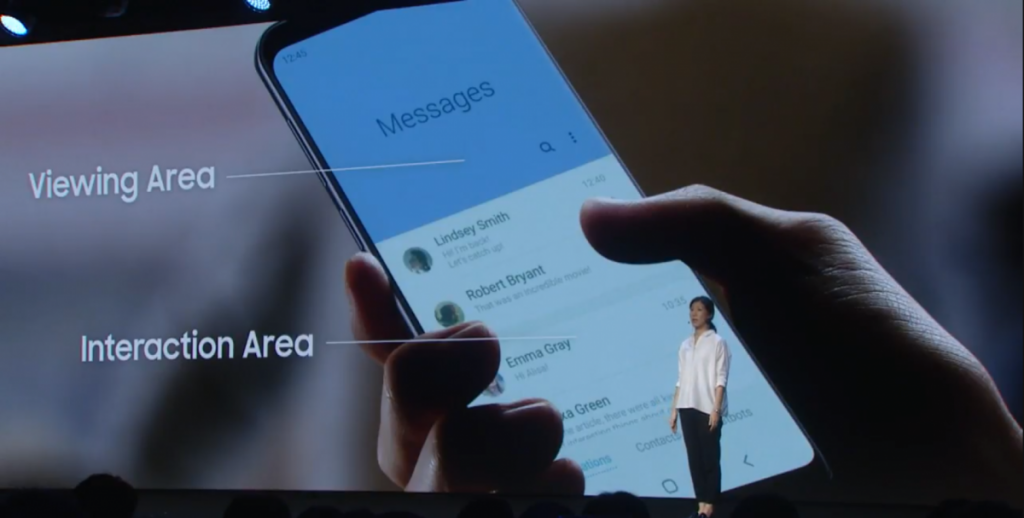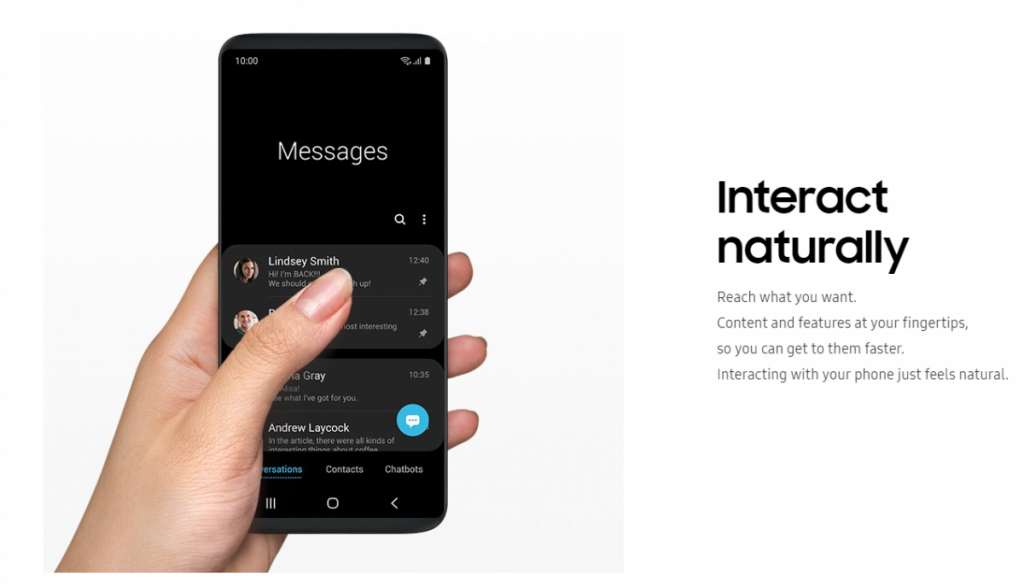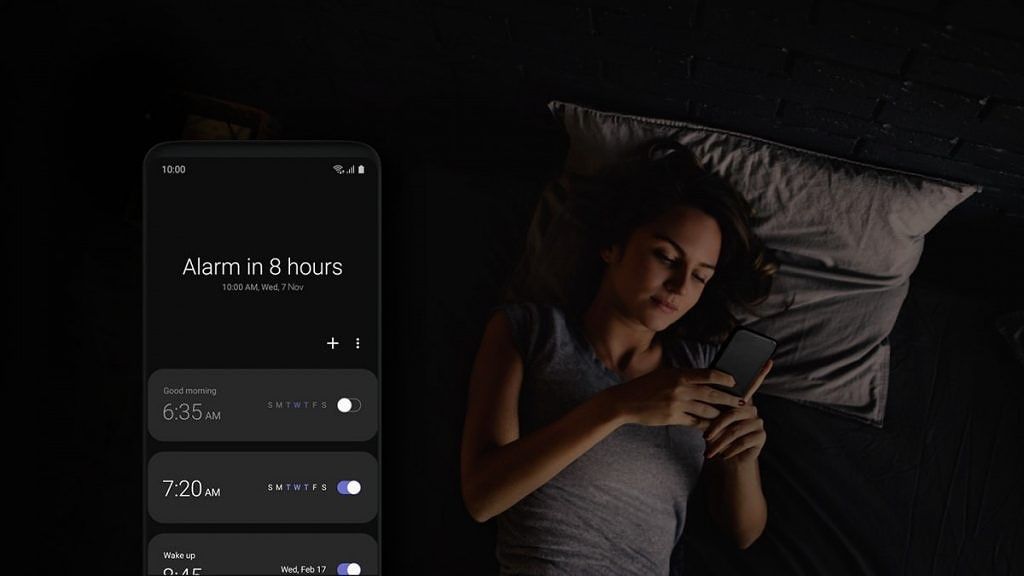At this year's Samsung Developer Conference, we finally caught a glimpse at the long-awaited smartphone with a foldable display. The device features a 4.6-inch Super AMOLED "cover" display which, when unfolded, reveals a 7.6-inch Super AMOLED "Infinity Flex" main display. In conjunction with Google, Samsung introduced the concept of "foldables" to the Android ecosystem. But the Infinity Flex display wasn't the main focus of the developer conference. Samsung also took to the stage to unveil "One UI", their Android Pie-based software and successor to their "Samsung Experience" design language and user experience.
One UI will be available for the Samsung Galaxy S9, Samsung Galaxy S9+, and Samsung Galaxy Note 9 in January. There will also be a beta program for the Galaxy S9 and Galaxy S9+ starting this month. One UI is a major reimagining of the Samsung design language. With all eyes on the upcoming Samsung Galaxy S10, let's talk about the changes Samsung has made to Android Pie to make One UI the software experience to beat.
One UI - Samsung's Design Language, Reimagined
When we first discovered and publicly disclosed early Android Pie builds for the Galaxy S9, Galaxy S9+, and the Galaxy Note 9, one of the main things that caught our attention was the completely revamped design. Though incomplete at the time, our early look showed that Samsung has been working on a radical design deviation from Android Nougat and Oreo-based Samsung Experience (formerly TouchWiz). Before the Samsung Developer Conference, we were calling the new UX Samsung Experience 10 but now we know that Samsung has opted for the "One UI" branding. So why are they calling it One UI?
One UI takes certain design cues from Samsung Experience and stock Android Pie with its new Material Theme design. But Samsung's new UX goes further than just a simple redesign. One UI reimagines the way you interact with the software to make it easier to use. There are two key takeaways here.
Improved One-Handed Usage
Samsung has been the pioneer of selling smartphones with larger displays. After all, it was the original Samsung Galaxy Note which set off the "phablet" trend which has now become the norm. Samsung's Infinity Display devices made Samsung's phones have small bezels, but the race to pack larger displays on smaller builds has come at the cost of one-handed usage. Reaching the top part of any modern big-screen smartphone requires some serious hand gymnastics, which smartphone device makers have attempted to solve via software tricks like scaling down the screen with "One-Handed Mode"-type features. Samsung, too, had their own feature to scale down the screen, but One UI solves this problem by completely re-arranging the areas where you interact with the display.
System apps are separated into two sections: a "viewing area", which occupies the top half of the screen and shows miscellaneous context related to the app (kind of like a giant action bar), and an "interaction area", which places the app's key interaction areas on the bottom half. This way, you can interact with the system with one-hand way more easily, as everything should be within your thumb's reach. Bottom navigation bars, buttons, you name it—everything you need to touch should no longer require stretching your finger to reach the top corners of the display.
This viewing area/interaction area setup spans the entirety of Samsung's new UI: from the messaging app, to the dialer, to the clock, to the settings menu, to the notification shade, and the Quick Settings panel. Many parts of the OS were redesigned with ease of use in mind, so those receiving the Android Pie update on their devices should be looking forward to these changes.
System-Wide Dark Mode
And one change that many of you are surely going to appreciate is a system-wide dark mode being built into One UI. By enabling a simple setting, the entire user interface—which is normally all-white by default—is switched over to an AMOLED dark theme which applies to notifications, the notification shade, the Settings menu, and all of Samsung's pre-installed apps.
This is good for many reasons. A dark mode improves nighttime usability by several degrees, and in this particular case, it was developed with this exact purpose in mind: default for daylight, a dark mode for nighttime. Many users, however, prefer having a dark mode because of aesthetics. A dark mode is also way more battery friendly, as it is mostly AMOLED black. Since most Samsung phones have Super AMOLED displays, true black content will result in the underlying pixels being shut off—effectively saving battery.
Speaking of themes, Samsung also mentioned that the UI can take on colors depending on the color of your device. We're not exactly sure how this'll work, but this seems like a neat way to personalize your software.
When is it coming?
One UI is set to roll out with the upcoming stable Android 9 Pie update for the Samsung Galaxy S9, Galaxy S9+, and Galaxy Note 9 in January 2019. It's also possibly going to make its way to previous phones such as the Samsung Galaxy S8, Samsung Galaxy S8+ and Samsung Galaxy Note 8 and devices like the Samsung Galaxy A9 (2018) and Samsung Galaxy A7 (2018) next year, although this hasn't been confirmed yet. Official betas are set to start soon, so if you have an eligible device, then download the Samsung Members app (or Samsung+ if you're in the U.S.) and submit an application.
One UI seems to be a pretty substantial improvement over the current Samsung design, and we can't wait to get to know more about it. You can read more about it on the official Samsung website.

